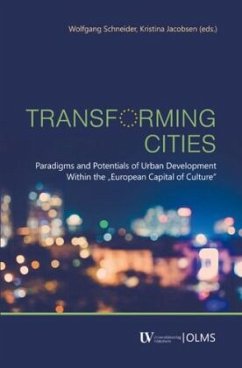In its more than three decades of history, the European Capital of Culture initiative has become an important instrument for cultural urban development. The EU cultural policy guidelines apply in all participating countries-but the design varies greatly from location to location. This volume reflects the approaches in 18 countries, inside and outside the EU, that have already hosted one or more Capitals of Culture. It conveys the assessments of scholars from various disciplines, and from those responsible for the programme on how art and culture deal with local and regional forms of transformation.
Bitte wählen Sie Ihr Anliegen aus.
Rechnungen
Retourenschein anfordern
Bestellstatus
Storno








